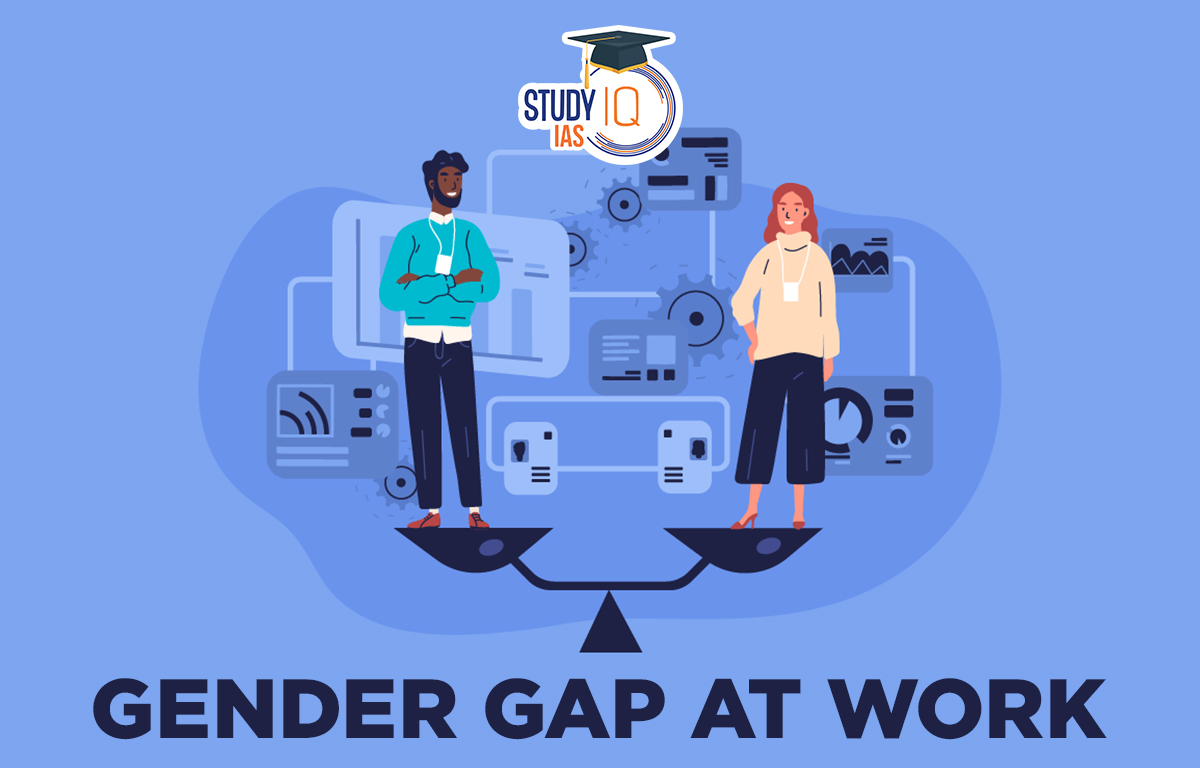Table of Contents
Context: A new publication by the International Labour Organization finds that women’s access to employment, working conditions and pay gap have barely improved in the past two decades.
Key Findings of the ILO’s Publication
- Access to employment: The report found that almost one in four women, globally, are unable to find a job, compared with 16.6% of men.
- 15 per cent of working-age women globally would like to work but do not have a job, compared with 10.5 per cent of men.
- Reasons: Personal and family responsibilities, including unpaid care work are among the reasons why women are disproportionately affected in the search for work.
- Region-wise analysis: The Jobs gap is particularly severe in developing countries where the proportion of women unable to find a job reaches 24.9 per cent in low-income countries.
- Unemployment rates: The global unemployment rates for women and men are very similar, because the criteria used to define unemployment tends to disproportionately exclude women.
- Vulnerable employment: While vulnerable employment is widespread for both women and men, women tend to be overrepresented in certain types of vulnerable jobs.
- For instance, women are more likely to be helping out in their households or in their relatives’ businesses rather than being in own-account work.
- Pay gap at work: Vulnerability, together with lower employment rates, takes a toll on women’s earnings.
- Globally, for each dollar of labour income men earn, women earned only 51 cents.
- Region-wise analysis:
- In low and lower-middle income countries, the gender disparity in labour income is much worse, with women earning 33 cents and 29 cents on the dollar respectively.
- In high-income and upper-middle income countries, women’s relative labour income reaches 58 and 56 cents respectively per dollar earned by men.
- This striking disparity in earnings is driven by both women’s lower employment level, as well as their lower average earnings when they are employed.

The International Labour Organization (ILO)
- About: It is a specialized agency of the United Nations (UN).
- It is the only tripartite U.N. agency since 1919.
- The unique tripartite structure brings together governments, employers and workers of member States, to set labour standards, develop policies and devise programmes promoting decent work for all women and men.
- Establishment: Established in 1919 by the Treaty of Versailles as an affiliated agency of the League of Nations. Became the first affiliated specialised agency of the United Nations in 1946.
- Aim: To promote rights at work, encourage decent employment opportunities, enhance social protection and strengthen dialogue on work-related issues.
- Members: At present the ILO has 187 Members. India is a founder member of the ILO.
- Headquarters: Geneva, Switzerland.
- Flagship Publications of ILO:
- Global Wage Report
- World Employment and Social Outlook (WESO)
- World Social Protection Report
- World of Work Report
- Conventions: The ILO’s eight core fundamental conventions are as follows:
- Forced Labour Convention, 1930 (Convention No. 29)
- Abolition of Forced Labour Convention, 1957 (Convention No. 105)
- Equal Remuneration Convention, 1951 (Convention No. 100)
- Discrimination (Occupation and Employment) Convention, 1958 (Convention No. 111)
- Freedom of Association and Protection of the Right to Organize Convention, 1948 (Convention No. 87)
- Minimum Age Convention, 1973 (Convention No. 138)
- Worst Forms of Child Labour Convention, 1999 (Convention No. 182)
- Right to Organize and Collective Bargaining Convention, 1948 (Convention No. 98)
- Note: India has ratified six out of the eight ILO fundamental conventions. India has not ratified Conventions No. 87 and No.98.


 AI Maker Labs: A Promise to build AI in ...
AI Maker Labs: A Promise to build AI in ...
 Daily Quiz 15 April 2025
Daily Quiz 15 April 2025
 How RBI Responded To Global Trade War Ch...
How RBI Responded To Global Trade War Ch...





















